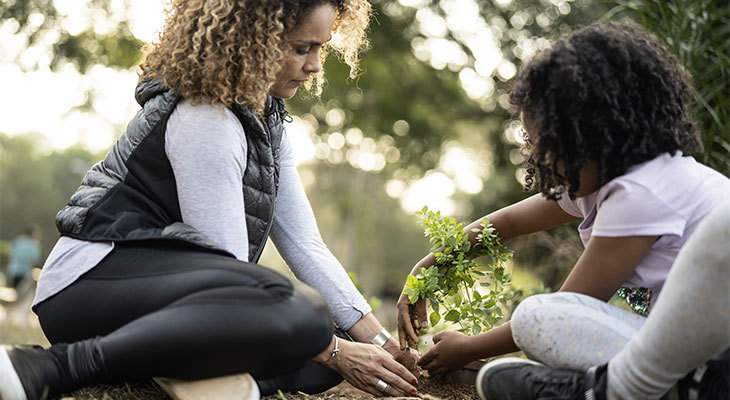You can raise a hopeful child, no matter what their circumstances.
Last month you learned that teaching your child to think and behave hopefully becomes an anchor, holding them steady in times of challenge.
Easier said than done. Especially when you have a child like Axel who is literally dredging his feet into the floor, held down by the roots of “I can’t.” There’s nothing more frustrating than knowing he can but not knowing how to help him get there.
Although those despairing roots can reach deep in a child’s heart and mind, they can be uprooted and something new can be planted. Hope.
I love visualizing hope like a garden—a beautiful garden that brings respite and encouragement to all who enjoy it. Hope is the seed, and you are the gardener. As a gardener, you use different tools to help that seed flourish.
Here are seven simple tools to raise a hopeful child.
Step 1: Vision. No gardener sets out haphazardly throwing seed around, expecting an organized and beautiful garden to spring up. Instead, successful gardeners envision exactly what they want to plant, when, and why. Before you even begin, envision what your hopeful child will look like, sound like, and do each day. Ask Holy Spirit to shape your vision and give you insight into who God designed your child to be. Then write down that vision. Everything you do from this point forward should be done with intention to move your child toward that vision.
Step 2: Prepare. A gardener prepares the soil and seed and gathers tools before planting. Prepare the soil in your child’s heart by praying over them (especially praying the vision that Holy Spirit has given you). Collect as many tools (resources) that you might need and ask other parents for support.
Step 3: Plant. Now here’s where it gets active—you have to do the work. Sometimes tough, dirty work! You plant seeds by using two specific tools: language and behavior. These two seeds stimulate thinking in children. Because of the stage of brain development, your child will learn more by watching what you are doing rather than listening to the words you are saying. Model the words and behaviors that you envision for your child. Refuse to allow exposure of things that grow despair (usually media and negative people).
Let’s take a break here and reflect on how you can use language and behavior to plant seeds of hope. Remember that hope is the ability visualize goals and develop the motivation to move toward them. Here’s how that language might look with Axel:
“Your homework must be done before you watch TV tonight. How can I help you work toward your goal of watching TV?”
“Last month you had the same struggle with reading, but you overcame it. What personal qualities helped you overcome that challenge?”
By responding with focus toward your child’s goal and his inherent strengths to help him get there, he will naturally move his focus toward what he wants rather than what he perceives he can’t do. It’s even more effective if you respond calmly, modeling a decision toward growth rather than an emotional response to a power struggle.
Trust me, Mama, I’m not perfect at this—and I never was. It’s so much easier to type a hopeful response years later than to speak hopefully in a tough moment. It’s hard and messy. Planting hope always is.
But it’s worth it. Keep remembering that beautiful garden that Holy Spirit has planted in your mind. Hope is growing, day by day, seed by seed.
May the God of hope fill you with all joy and peace as you trust in him, so that you may overflow with hope by the power of the Holy Spirit. (Romans 15:13)
Next month I’ll discuss the last four simple tools for raising hopeful kids. Stay tuned!


Leave a Reply